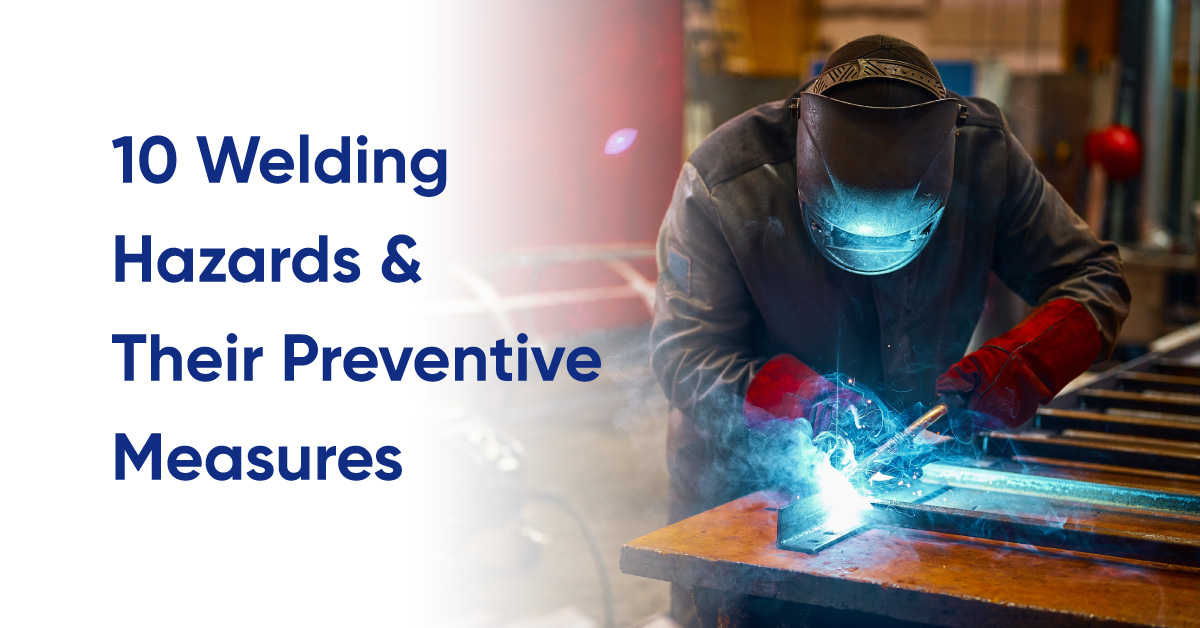How Dangerous Is Welding and Tips To Control It?
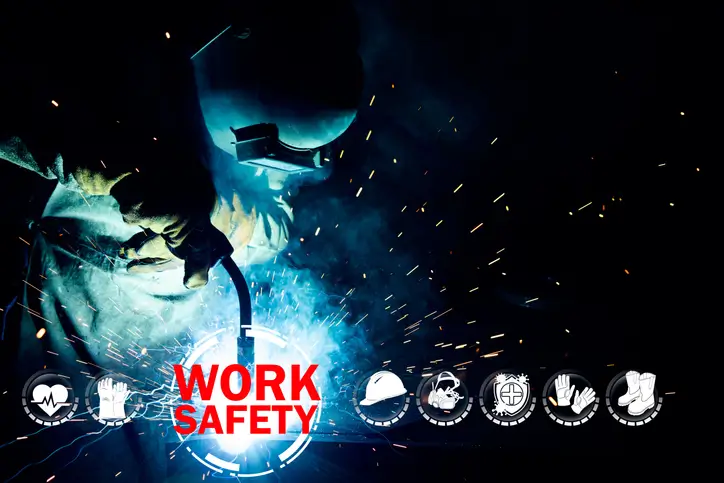
Hazard #1 – Heat and Burn
The intense heat generated during welding can cause severe burns to the skin and eyes. High temperatures generated during welding can lead to burns, both from contact with hot materials and from sparks and molten metal splatter. Additionally, welding can ignite flammable materials in the vicinity, causing fires and explosions. Welders must wear appropriate personal protective equipment (PPE), including heat-resistant gloves, clothing, and a welding helmet with a darkened visor to protect against burns and UV radiation.

-
You must have to wear flame-resistant clothing and welding gloves.
-
If you want to prevent UV rays, make sure you use curtains or screens to block radiation from other workers.
-
It is important to ensure the welding helmet must be in good condition.
Hazard #2 – Welding Fumes and Gases
The welding process produces harmful fumes and gases, including metal fumes and toxic gasses such as ozone, nitrogen oxides, and carbon monoxide. Prolonged exposure to these substances can lead to respiratory problems, lung diseases, and other health issues. Adequate ventilation and respiratory protection are essential to reduce exposure.

-
Try to weld in areas that are well-ventilated, or you can use exhaust fans.
-
Make sure you use respiratory gear that is appropriate, such as a welding helmet with a built-in respirator.
-
Be mindful of the vapors and fumes produced by the materials being welded. They can be harmful if you inhale them.
Hazard #3 – Electric Shock
High electrical currents are used during welding, which increases the risk of electric shock or electrocution if safety procedures are not followed. However, electric shock is the most severe danger that welders confront and it can also lead to death. When a welder comes into direct touch with two metal items that have a voltage between them, an electric shock happens.

-
Always wear dry, insulated gloves and clothing.
-
Make sure the welding machine is properly grounded.
-
Avoid working in wet conditions to reduce dangerous welding hazards,
-
Check wires, cables, and connections for damage regularly.
Hazard #4 – Eye Injuries
Welding arcs emit intense UV and infrared radiation that can cause eye injuries, including arc eye (welding flash), cataracts, and permanent damage to the retina. Welders should always wear protective welding helmets with appropriate sheet levels and safety glasses with side shields.

-
Always put on a suitable welding helmet and a pair of sunglasses.
-
Under the helmet, wear safety glasses with side shields.
-
Regularly check helmets for deterioration and replace them when necessary.
Hazard #5 – Stress Disorder
Welders frequently have repetitive stress disorders (RSIs), commonly referred to as musculoskeletal disorders (MSDs), because their employment is so physically demanding and repetitive. Pain, discomfort, and decreased mobility may result from these injuries to the tendons, muscles, ligaments, and various other soft tissues. Welding often involves awkward postures and heavy lifting, which can lead to musculoskeletal injuries if not properly managed. Adequate training and ergonomic practices can help prevent these injuries.

-
You can use lifting aids, such as cranes or forklifts, whenever possible.
-
Train workers in proper lifting techniques, and provide ergonomic lifting equipment like back belts and lifting gloves.
-
Allow short breaks to help them alleviate their joints and muscles.
-
Provide anti-vibration gloves.
-
Maintain equipment in good working condition, and limit exposure time.
-
Try to keep the right posture during welding
-
Avoid uncomfortable or protracted stretching while lifting large goods.
Hazard #6 – Fumes and Gases
Welding produces hazardous fumes and gases, including carcinogenic substances that can be harmful if inhaled. However, it also depends on the kind of welding being done and the substances being used that might create different gases and vapors. These can be gases like nitrogen, carbon dioxide, argon, helium, and others.

-
Clear the welding area of flammable materials.
-
Keep fire extinguishers and fire blankets nearby.
-
Use spark arrestors on welding equipment.
-
Store compressed gases in a designated area away from welding operations.
Hazard #7 – Chemical & Machinery Hazard
Some welding processes, such as welding on coated or painted materials, can release hazardous chemicals when heated. Proper identification of materials and appropriate safety measures are necessary when working with potentially toxic substances.
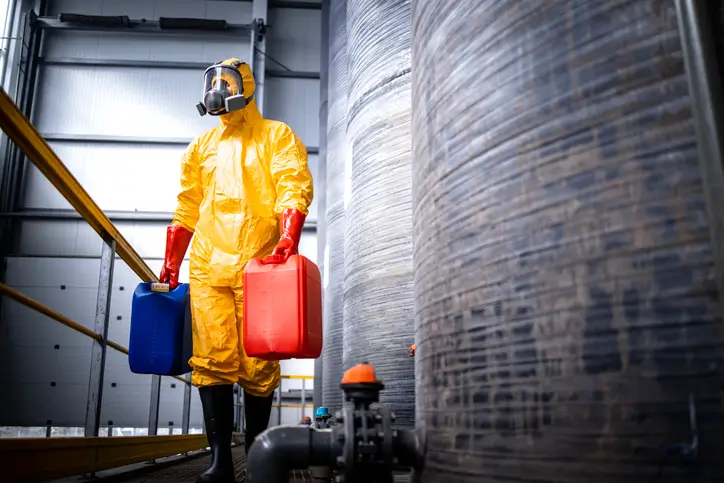
-
Follow lockout/tagout procedures when maintaining or repairing welding equipment.
-
Ensure all equipment is in good working condition and properly maintained.
-
Train workers on safe equipment operation and emergency procedures.
Hazard #8 – In Adequate Training
Lack of training can result in improper use of welding equipment, an increased risk of accidents, and errors that jeopardize safety, making it an important consideration in welding. To ensure that welders acquire the information and abilities required to carry out their work safely and successfully, proper training is essential.
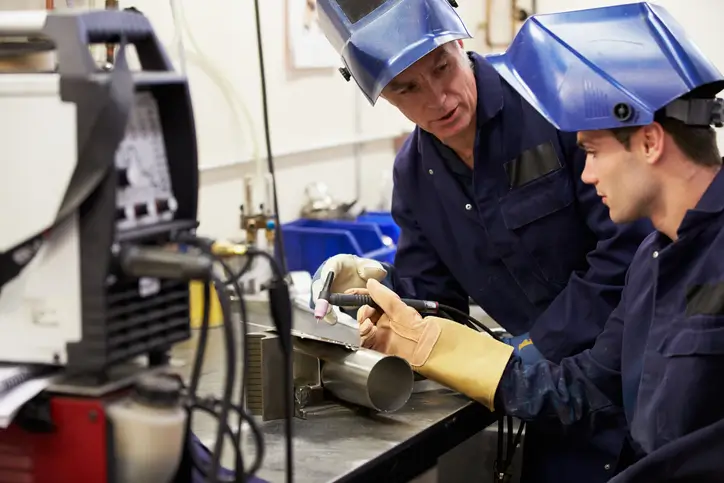
-
Implement thorough training programs, like OSHA, that address all welding safety-related topics.
-
Training should cover theoretical information, the development of practical skills, and methods for identifying and mitigating hazards.
-
Encourage welders to continue their studies and professional growth so they may keep updated on the newest safety guidelines, methods, and tools.
-
Create awareness so welders can recognize potential risks connected to the welding process.
Hazard #9 – Physical Injury
Due to the severity of the work and the frequent use of heavy machinery and materials, welders are at risk for a variety of physical injuries. Cuts, burns, and wounds sustained from falling objects and being struck by them are a few examples of these. If you use powerful tools intense heat equipment can also be risky and lead to a severe welding injury.
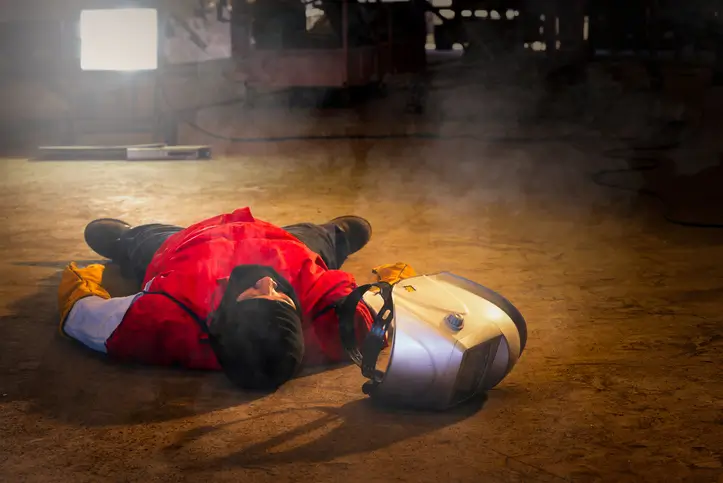
-
Keep your workspace as clean as you can.
-
To keep a workspace clear, routinely eliminate any extraneous tools or supplies. The likelihood of tripping over items left on the floor will be decreased.
-
Use the right equipment for the task you perform by hand and be careful while doing that. Accidents and danger might result from using the incorrect tool.
Hazard #10 – Noise Hazard
Welding processes can produce high levels of noise, leading to hearing damage or loss if not adequately protected. Hearing protection, such as earplugs or earmuffs, should be worn in noisy welding environments. During welding, if you do not consider the precautionary measures, it will lead you loss your hearing capability.

-
You must use hearing protection like earplugs or earmuffs.
-
Try to schedule regular hearing tests for welders.
-
Make sure you enclose noisy equipment or move them away from workers.
Final Words
To mitigate these hazards, welders and their employers should implement OSHA safety measures and practices, such as wearing appropriate personal protective equipment (PPE), providing proper ventilation, ensuring electrical safety, and conducting regular training and equipment maintenance.
However, signing up for the OSHA courses might be the only way to reduce welding hazards. When welders are aware of the specific hazards, they can take appropriate precautionary measures immediately.

